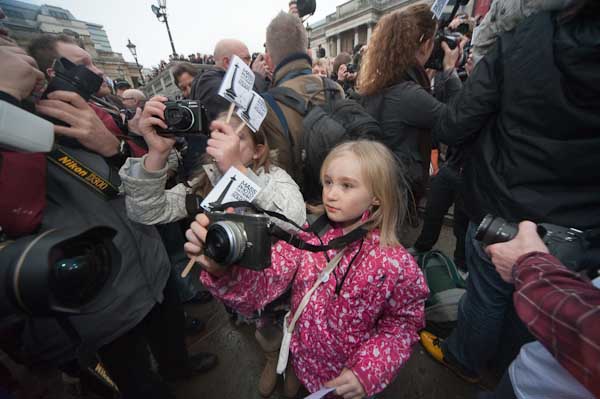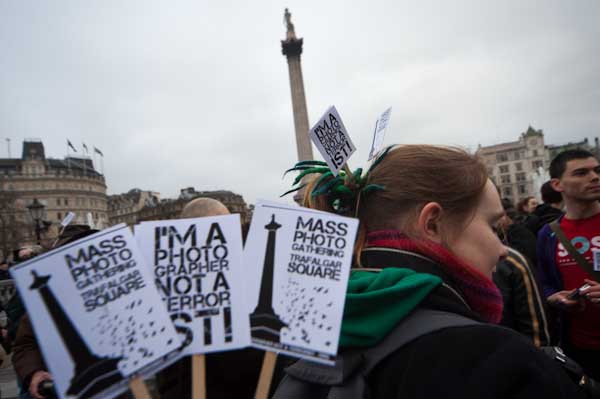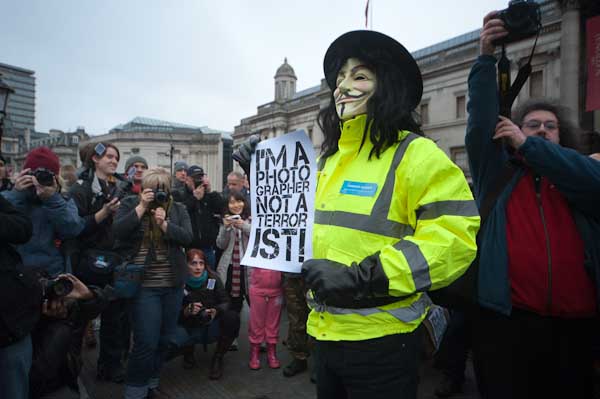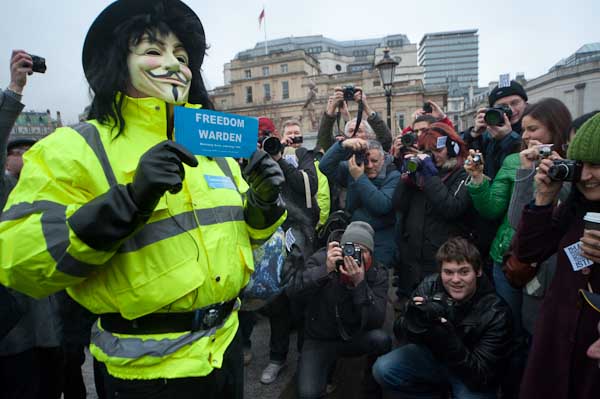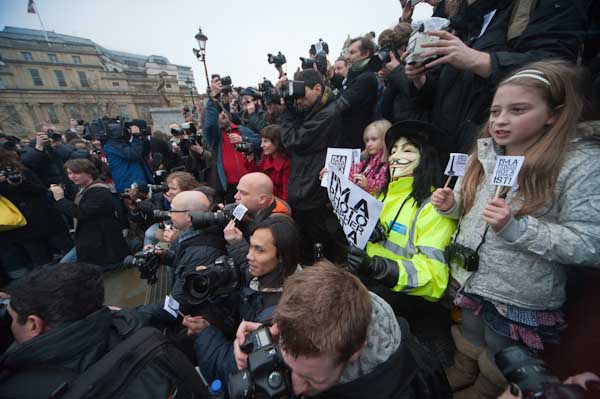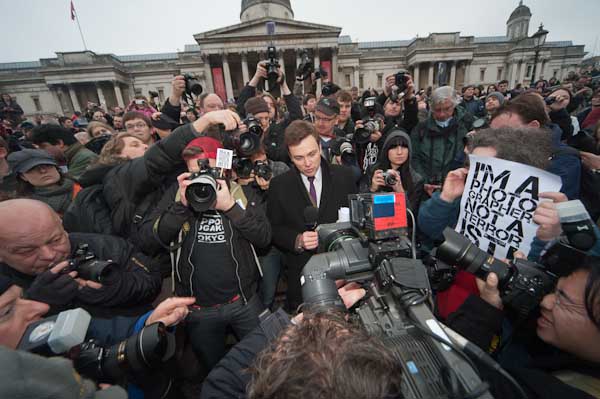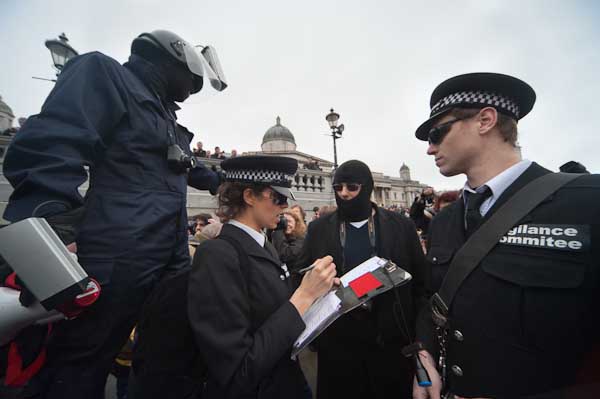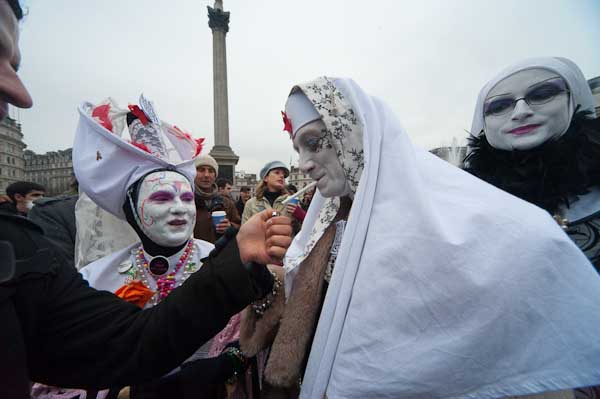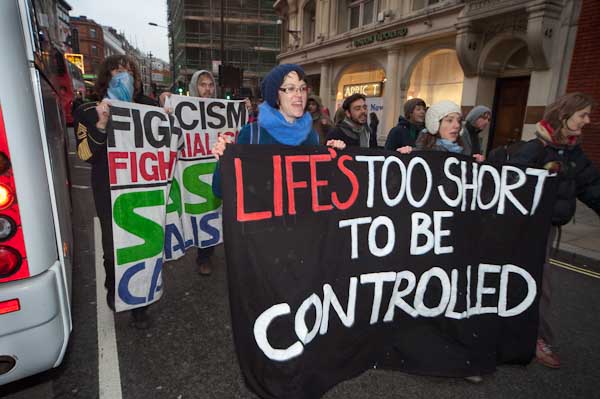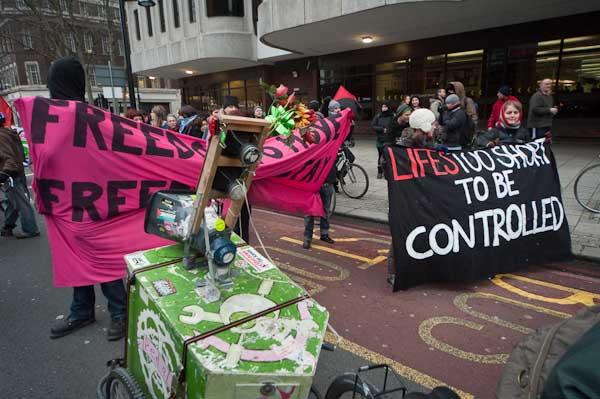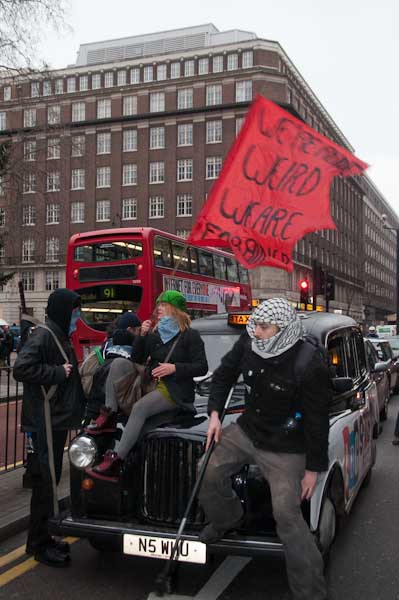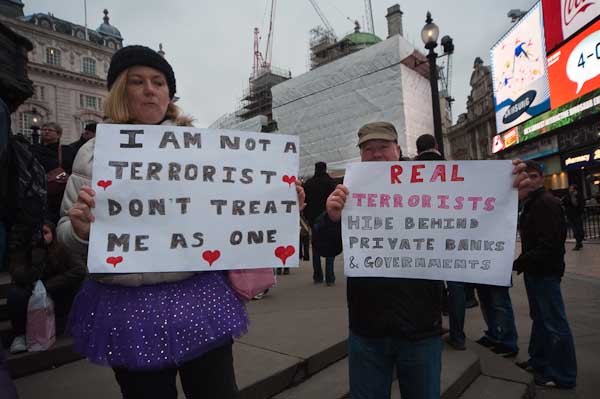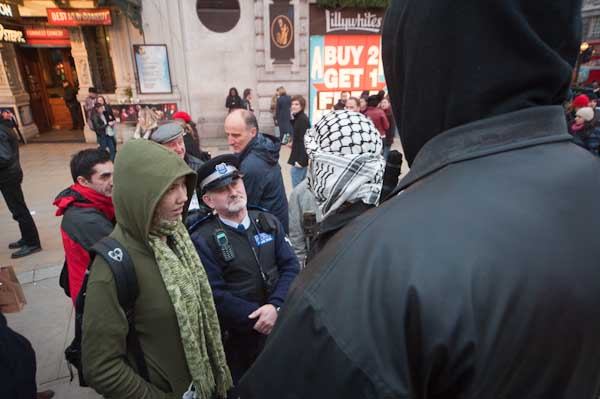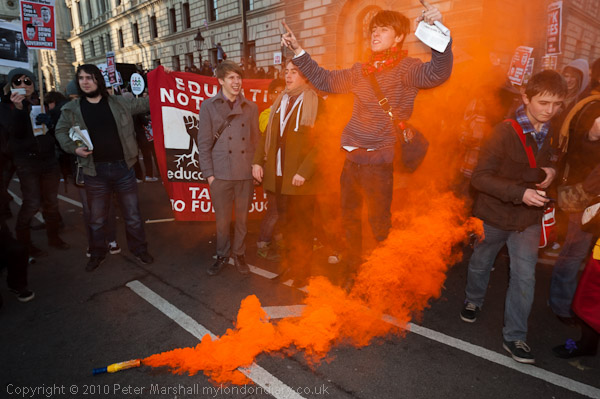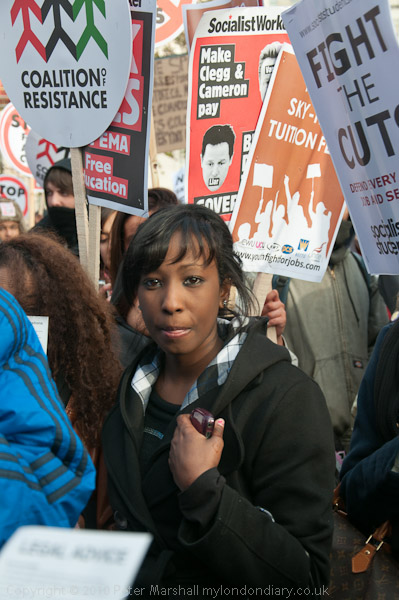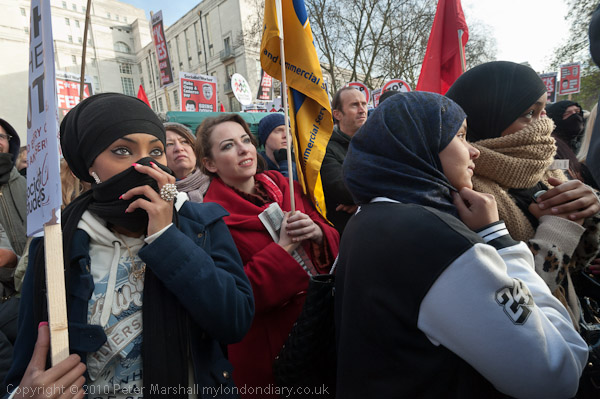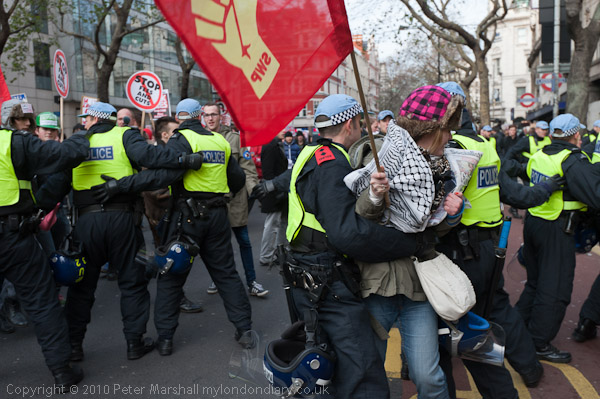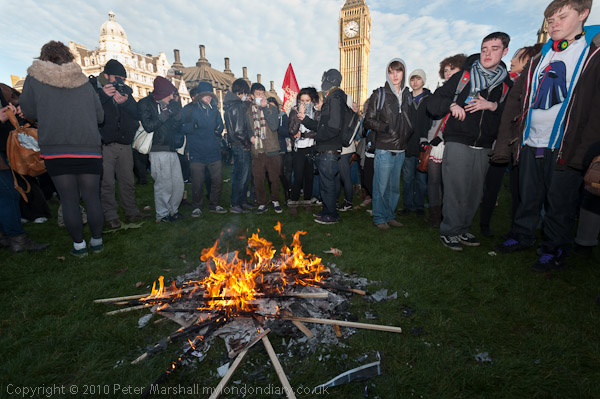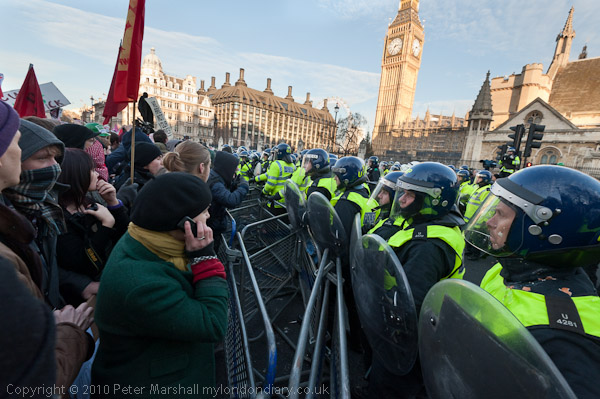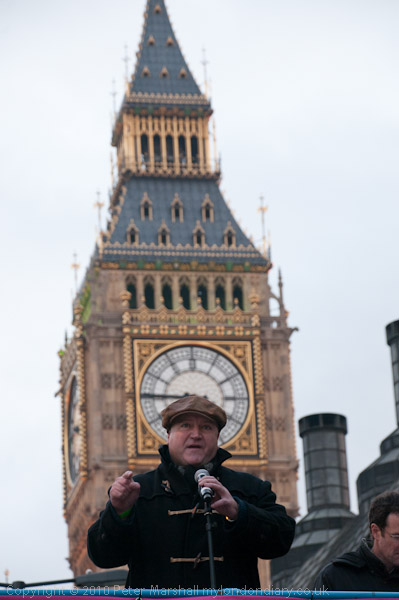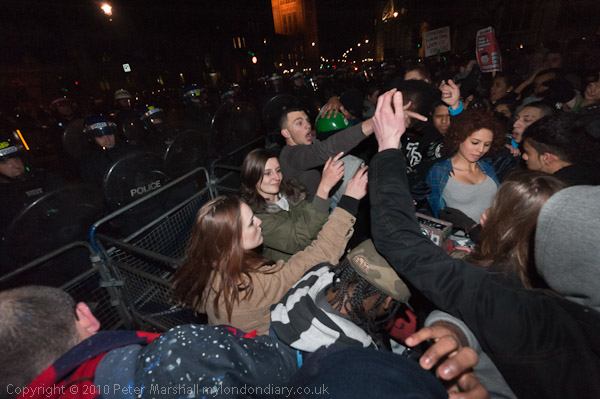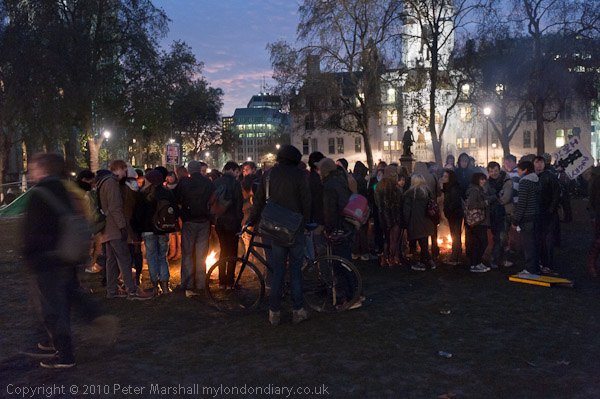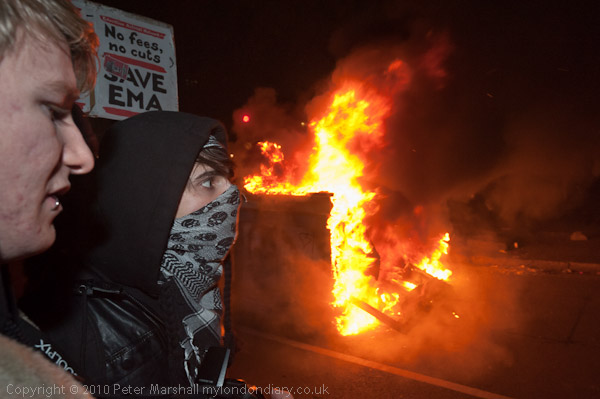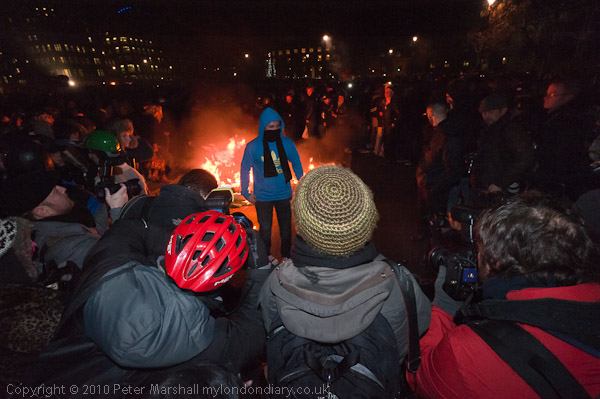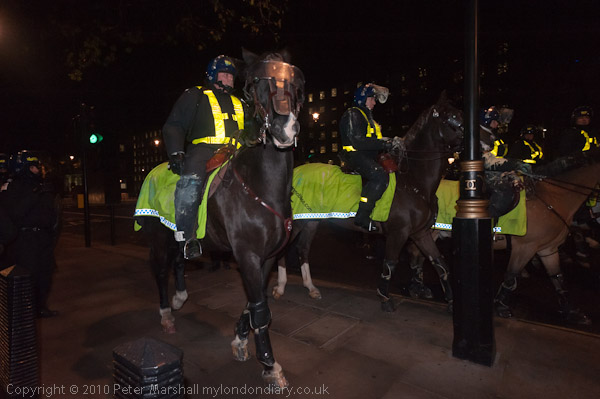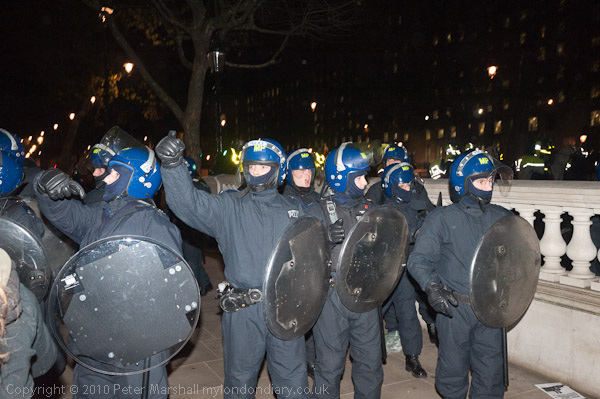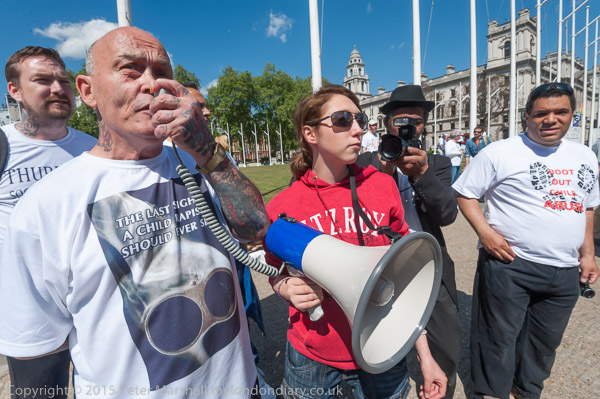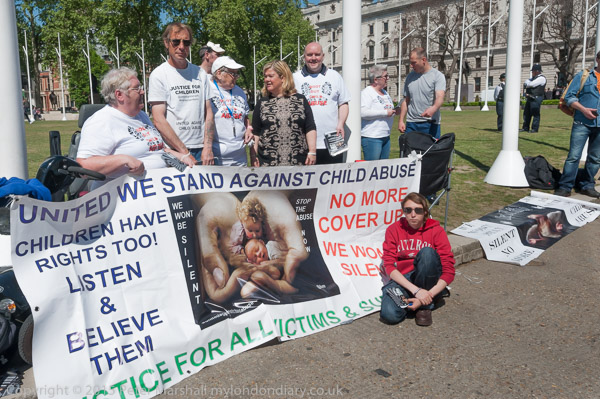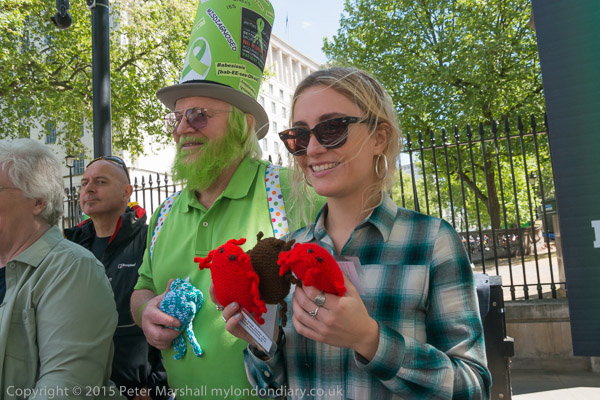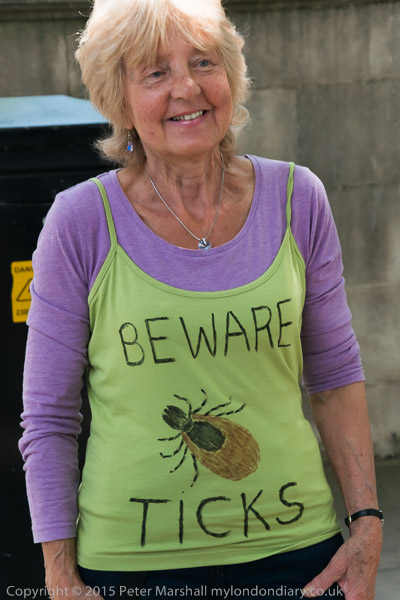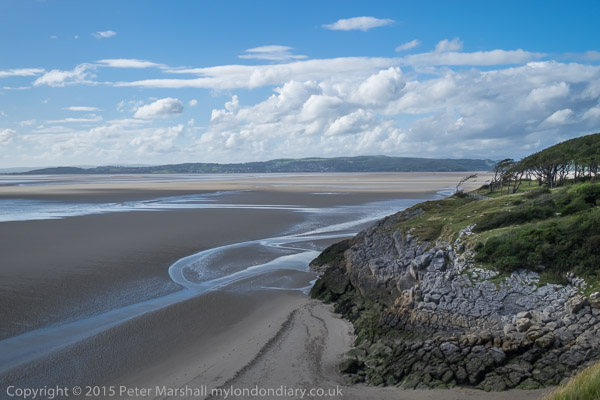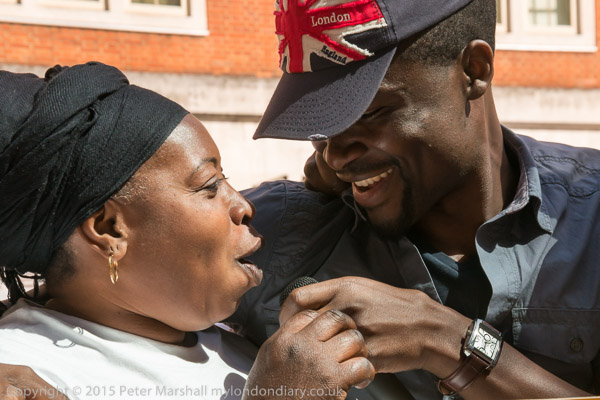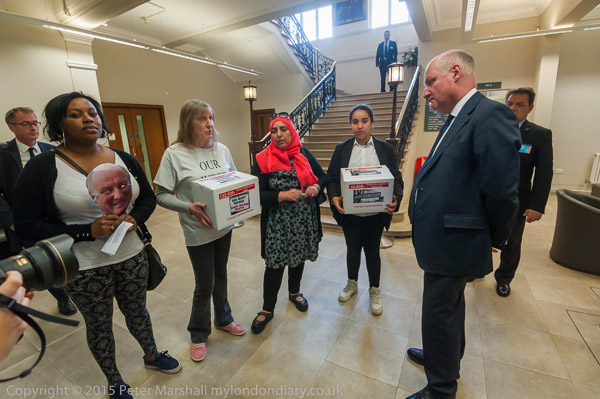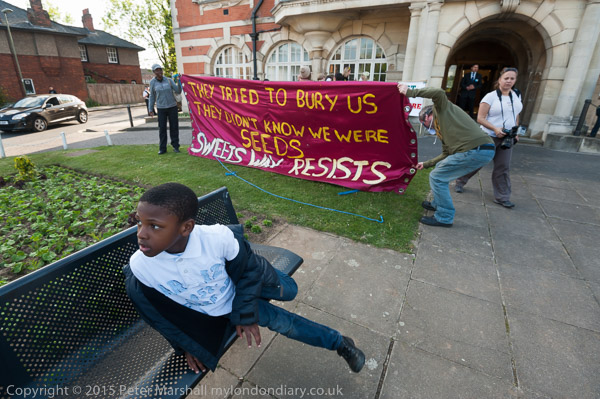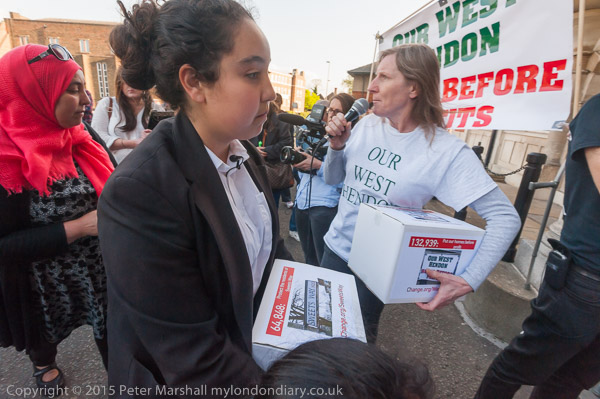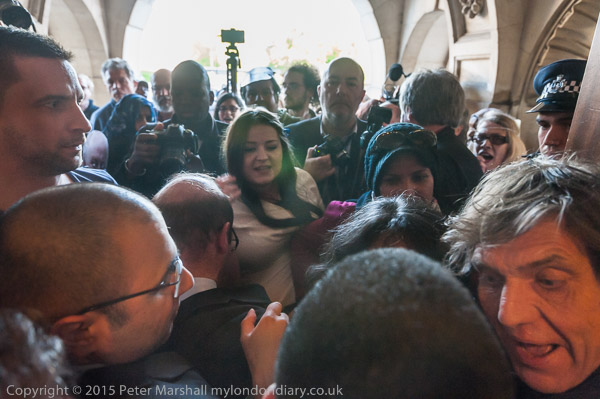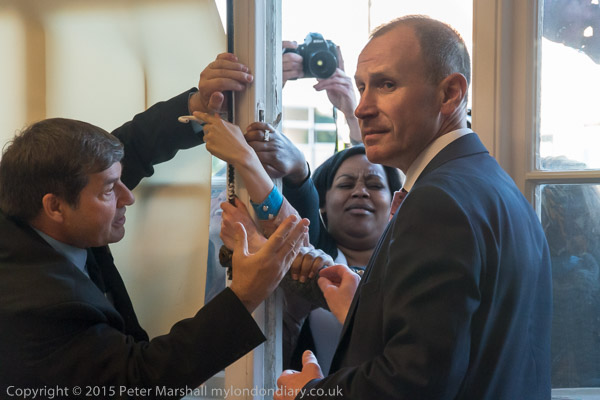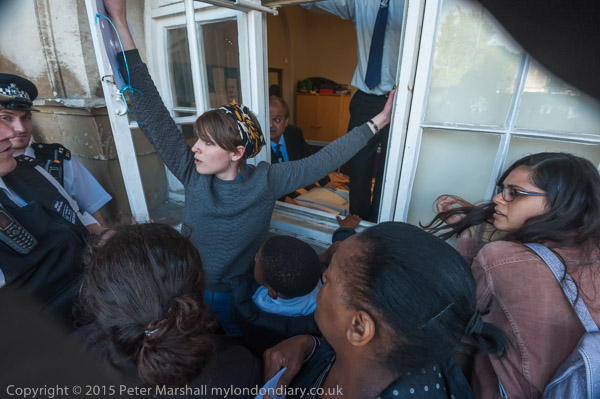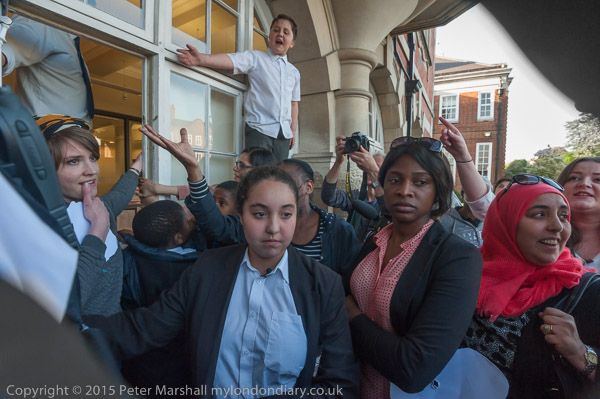DSEI March and a Tank: On Tuesday 11th September 2007 I marched with protesters from Plaistow Park to Custom House were the largest arms fair in the world was being held, – it is still held every two years and is again taking place now. Then I went to the main entrance by the side of the Royal Victoria Dock to welcome the Space Hijackers, “an international band of anarchitects” who had promised to come with a tank to sell it at the fair as a protest.
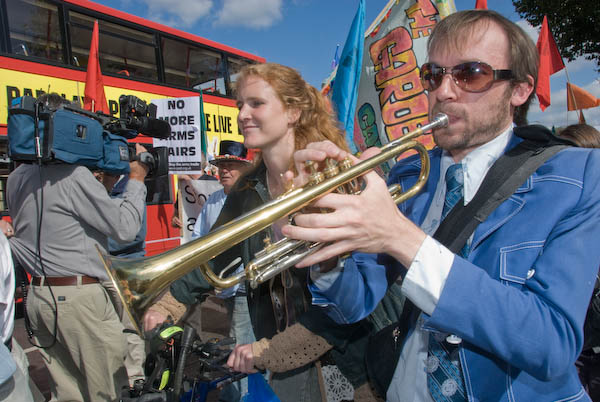
Here, with some minor corrections, is what I wrote about the day’s events back in 2007, along with some of the pictures I took and links to where you can see more of my pictures on My London Diary.
CAAT March Against DSEi East London Arms Fair
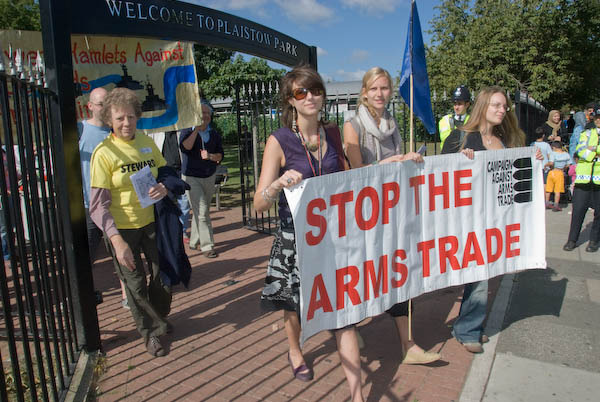
One of the more scandalous events to take place in London is the DSEI (Defence Systems & Equipment International Exhibition) arms fair, held every two years since 2001 at the Excel Centre on the side of the Royal Victoria Dock in Newham.
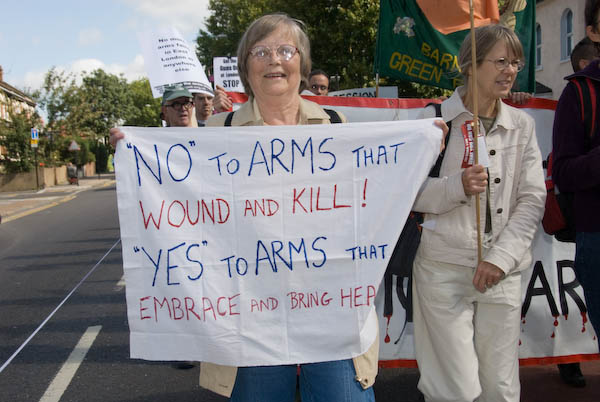
Even if you are not a pacifist (and I’m not) it is a trade that has its sickening side, with arms sales to corrupt regimes who use them to kill, torture and deny human rights to their own people, as well as endless shady deals by arms dealers that end up with weapons traded there in the hands of criminals around the world – including some used on the streets of this country.
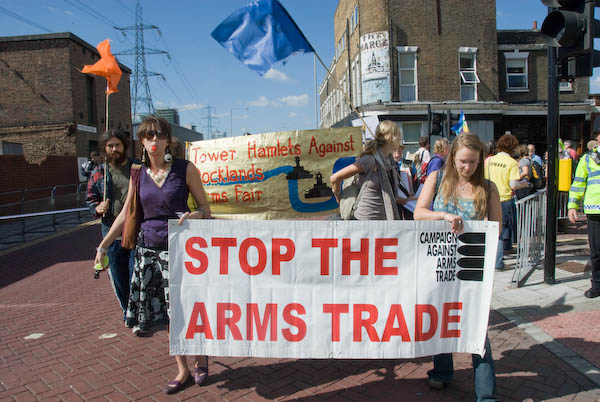
Britain also has a thriving business in implements of torture, which have been exposed as on sale in earlier shows here. The show also features all the other kinds of nasty devices used by police forces around the world to keep corrupt governments in power.

Of course our government claims to have an ethical policy so far as arms sales are concerned, but in reality it is more about making deals look clean on paper than really worrying about where the arms will end up and what they will be used for. DSEI isn’t just a UK show, it is the world’s largest arms fair – the 2005 show had over 1200 exhibitors from 35 countries present.

The Campaign Against Arms Trade (CAAT) organised a peaceful protest against the fair with a march through Newham from Plaistow Park to a rally outside Custom House Station, as close as they were allowed to get to the Excel Centre. Around 150 people walked the 2 miles to the rally where they met around 50 others who had travelled there directly, and later they were joined by a group of ‘Critical Mass’ cyclists.
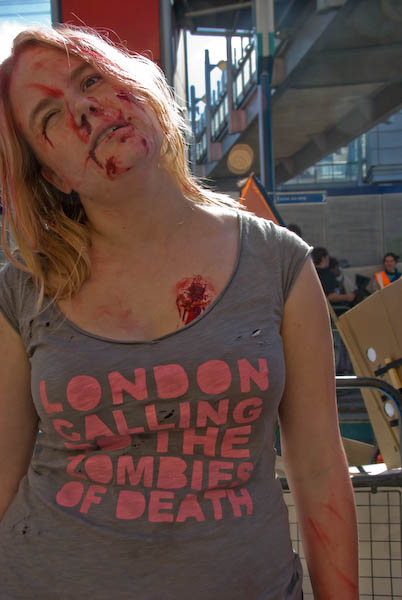
Unfortunately the police set up a long thin pen along the side of the road opposite the station, and would not allow speakers to use the small cycle-towed sound system. So the demonstrators were too spread out for many to hear the speeches, by local residents Len Aldis and Bill Perry, local councillor Alan Craig, Green Party Mayoral Candidate Sian Berry, CAAT’s Ian Prichard and comedian Mark Thomas.
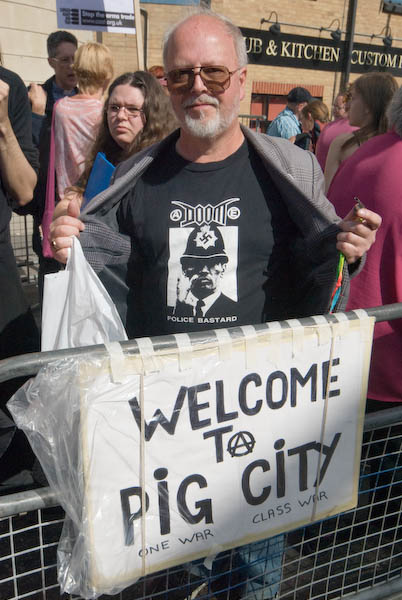
The DSEI causes major disruption to the area, with millions spent on extra policing and a number of roads and paths being closed – including the very useful high-level bridge across the dock itself. But the very minor inconvenience of a slightly louder amplification for a few minutes was apparently out of the question. It was a decision that clearly indicated police priorities.
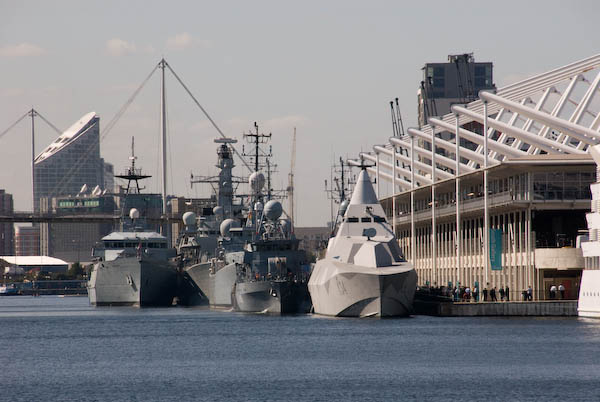
Normally the Royal Victoria dockside is open to the public, but this week the whole northern side was off limits as I found. I took a walk past the eastern end of the dock and then around to the dockside at Brittania Village to get a view of the Excel Centre and the military vessels moored alongside, including a Swedish Stealth Corvette, with odd profiles and jagged camouflage designed to reduce its visibility and radar and other profiles.
More pictures at CAAT March Against the Arms Fair
Space Hijackers Auction Tank at Arms Fair

I was slowly making my way around the the Tidal Dock Basin Road which leads to the main vehicle entrance to Excel. The Space Hijackers had announced they would be bringing a tank to the fair, and this seemed to be the likely route they would take.

Police had earlier stopped their actual tank almost as soon as it hit the road for some so-called ‘road safety checks’, but the Space Hijackers had tank number 2 in reserve. I think it was strictly a converted Armoured Personnel Carrier, but still a very impressive vehicle. I was pleased to find my guess was right when it made its way down the road, led by someone on a bicycle.

No surprise, the police wouldn’t let it into the arms fair, but it was allowed to park by the side of the entrance and a party and auction took place.

When people began to leave the arms fair, the protesters were able to make a very visible and audible protest as they drove slowly by. At one stage the police helped by blocking the traffic for a while so they could get a better view of the protest.
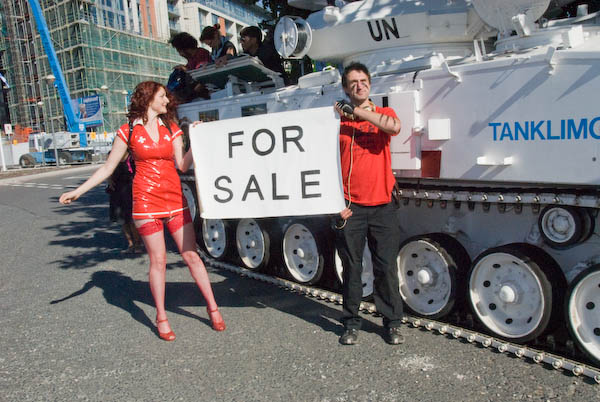
Generally the police were unnecessarily restrictive, penning the protesters to one side of the road, and harassing press. That isn’t a genuine press pass one said when I showed my NUJ issued press card [from the UK Press Card Authority Ltd and recognised by the National Police Chiefs’ Council as showing me “a bona fide newsgatherer” who were trying to stop me doing my job], threatening me with arrest unless I got back behind the line of police.

The police FIT team did its usual best to stoke up the atmosphere with their intimidatory tactics – certainly something that gives photographers a bad name. It is hard to believe that those hundreds (probably by now thousands) of pictures they have of me – mainly with a camera obscuring my face – are of any great use in protection national security. [Later when I made a ‘Freedom of Information’ request they denied having a single image of me.]
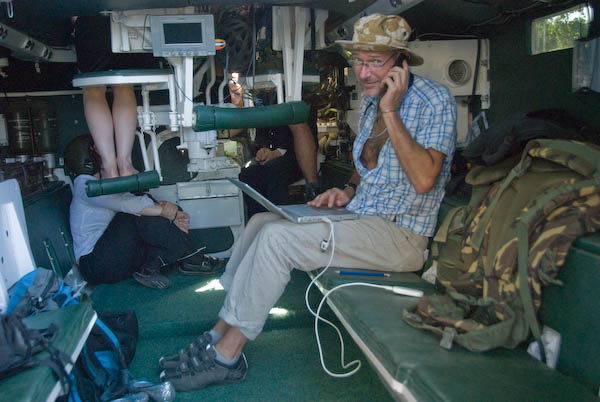
I’m not worried about being photographed – my appearance is pretty much public property since until recently a picture of me was viewed around a million times a month on the commercial site I used to write for.
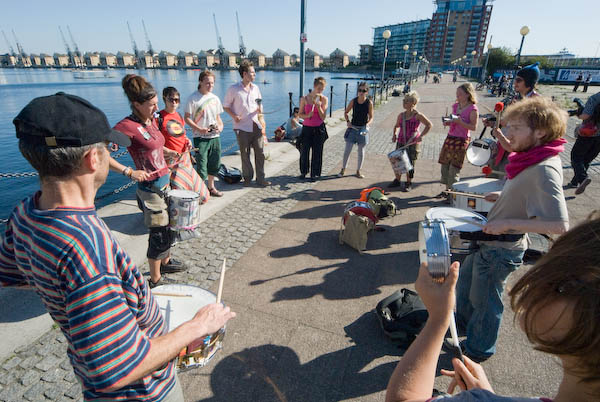
I stayed until the tank had been auctioned, with some interesting bids but then had to leave to attend a meeting where my presence was vital. I was rather annoyed at having to walk an extra half mile or so to the station when police refused to let anyone use the direct route. There was really no reason or logic for this kind of minor harassment.

You can see much more about the event and also read more comments on the police harassment of journalists on My London Diary at space hijackers auction tank at dsei.
Flickr – Facebook – My London Diary – Hull Photos – Lea Valley – Paris
London’s Industrial Heritage – London Photos
All photographs on this page are copyright © Peter Marshall.
Contact me to buy prints or licence to reproduce.
